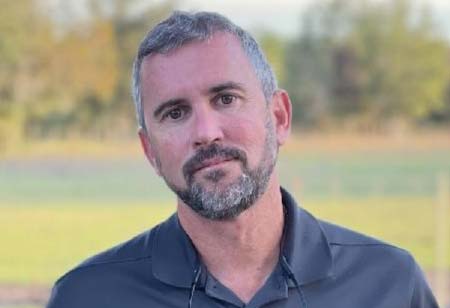I believe my contribution to the agriculture world is by using science and best management approaches to better serve our customers and by being selective and targeted with the products we choose while being good stewards to our communities.
A best practice I promote is to pull soil samples on all new work and periodically on our existing accounts. So, if the need arises to adjust the fertilizer requirements, this can occur before any product is purchased or applied to the job site. This practice prevents us from using a product that does not produce or yield the desired outcome. These samples tell you a story of what is lacking or in abundance in the soil, and they aid me with formulating a plan to achieve a pleasing lawn and landscape for our customers. At times, this may seem unnecessary, but when I meet with our team and clients to explain the benefits, they learn to appreciate and understand my approach versus just applying a stock fertilizer blend that potentially will not meet the needs of the soil conditions or the landscape.
Applying fertilizer every month or two with no rhyme or reason is never the answer
Implementing integrated pest management methods aids us in the reduction of fertilizer applications, keeps us in compliance with fertilizer regulations depending on the site location in Florida, and, most importantly, reduces fertilizer waste. Applying fertilizer every month or two with no rhyme or reason is never the answer. With fertilizer regulations becoming more prominent in Florida, using the right blend tailored to the property’s needs is crucially important.
Our team also uses best management practices for insecticides and fungicides by routinely implementing IPM methods. The old days of blasting our lawns and landscapes just because of a date on the calendar with pesticides when there are little to no issues present are no longer acceptable. With the utilization of systemic products, when possible, we can target a specific pest and reduce the frequency of chemical applications. We want to be strategic when eliminating an insect or disease after exceeding the threshold of acceptable damage. Misuse or repetitive application of pesticides can and will take its toll on our environment and eventually cause more harm than benefit. These outdated methods will only aid in a pest building up chemical resistance and the collateral damage and death of beneficial insects in our landscape. Sometimes, people have a tough time understanding this, and this is where I and others in our industry need to educate our team members and clients continually. I have often asked clients: if a product we use today becomes pest-resistant, where will we go from here? Most of the time, the other options available do not provide the desired results and or can be cost-prohibitive. Numerous products we used years ago have since been pulled off the market due to misuse or environmental impact concerns.
Implementing plant growth regulators into our agronomic plan allows us to save on frequency and the numerous hours of pruning our fast-growing ornamentals. By using these products and knowing how to apply these PGRs properly, we can increase the safety of our employees. Nine times out of ten, shrubs that are a candidate for PGR application require our employees to prune from a ladder. Unfortunately, accidents occur more frequently when our team members are pruning from ladders. By reducing the frequency of shrub pruning, we can also reduce the risk of our employees having an accident.
As good stewards of our environment,the calibration of our equipment needs to be completed daily. From a clogged head to a leaky fitting, it does not take much to throw off the precision of our equipment. This is something that I feel is a necessity and is a non-negotiable task that I require our team members to perform every day. A small example of why this is so important: If you are going out with a granular fertilizer designed to achieve optimal results at four pounds of total product per thousand square feet and it is applied at three pounds per thousand square feet, that is 25 percent less product than required to achieve optimal results. A small calibration error like this could make a significant difference in applying the proper amount of product.
On the other hand, if a product is overapplied, this can lead to a damaged lawn or landscape. Turning these poorly executed applications into a repair or replacement of the landscape costs the company unnecessary expenses in the product, labor costs, and, most notably, the environmental impact. Additionally, it would make our company look very unprofessional in the client's eyes. I always emphasize that our employees are professionals and do it right the first time.
This is a question I pose to my team members: In a day, a week, a month, or even a year, when there is nothing more than a story to tell about what you did, what story do you want everyone to tell?


